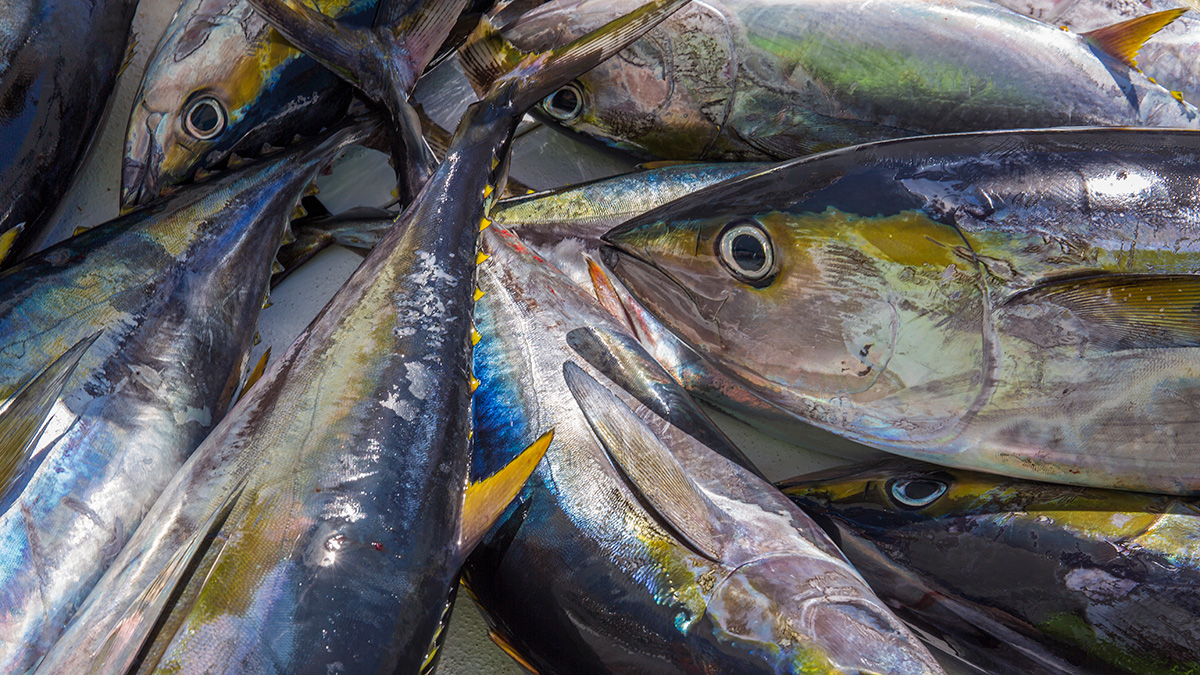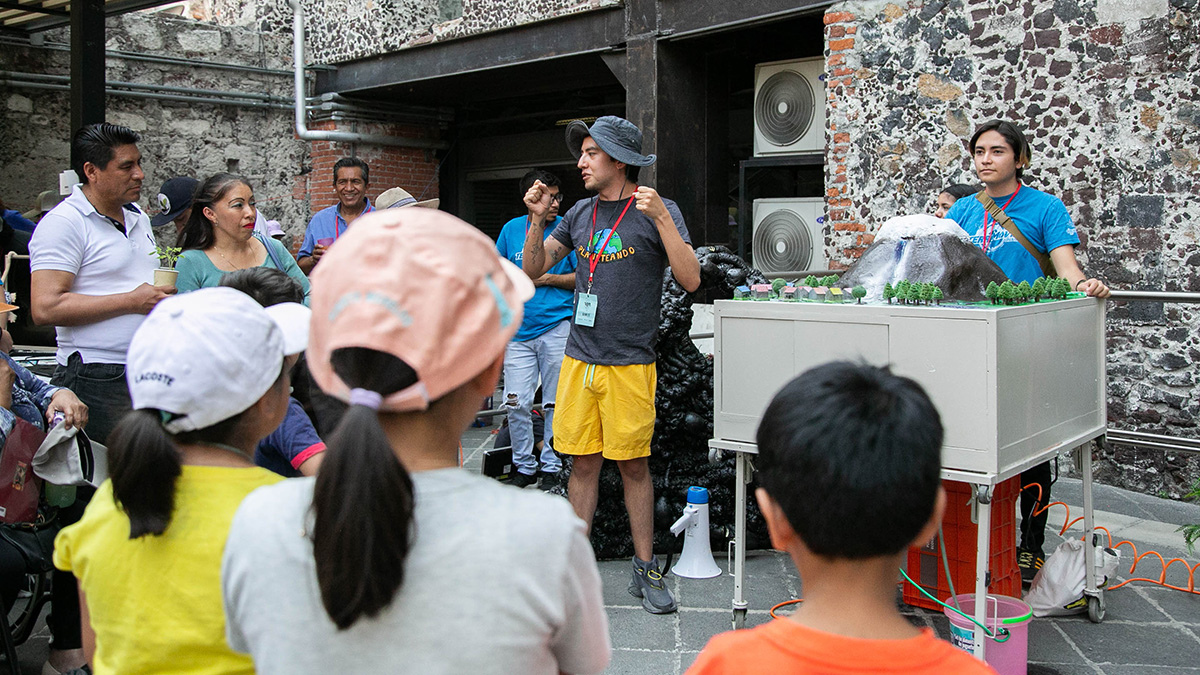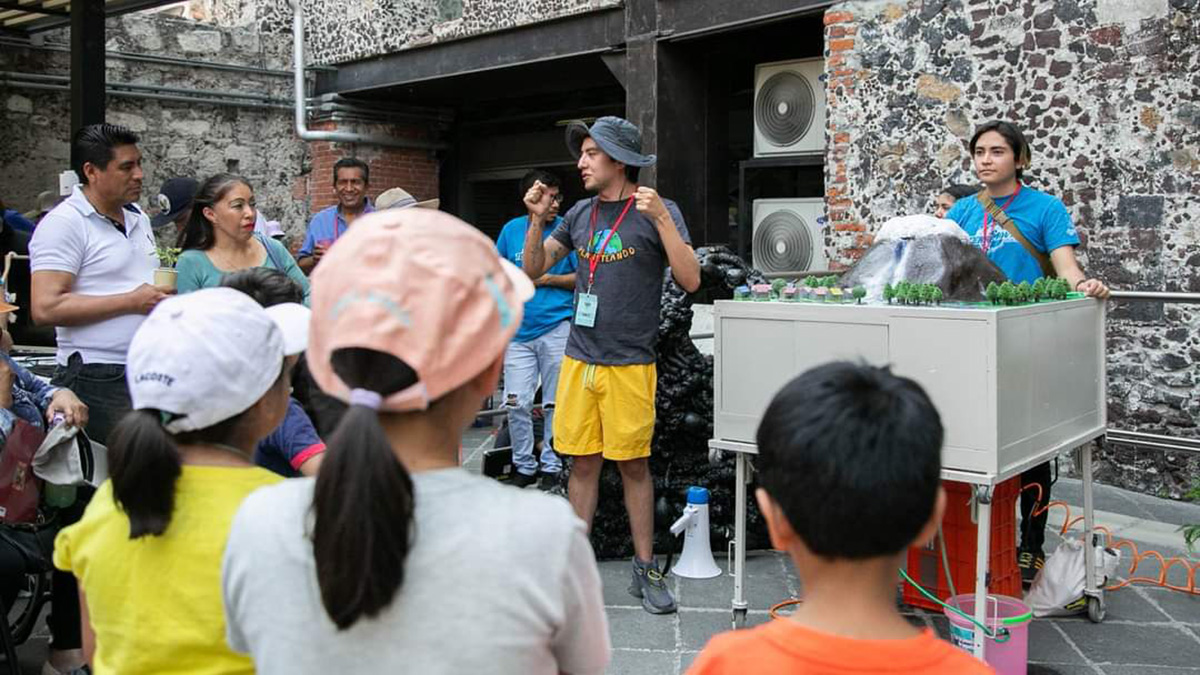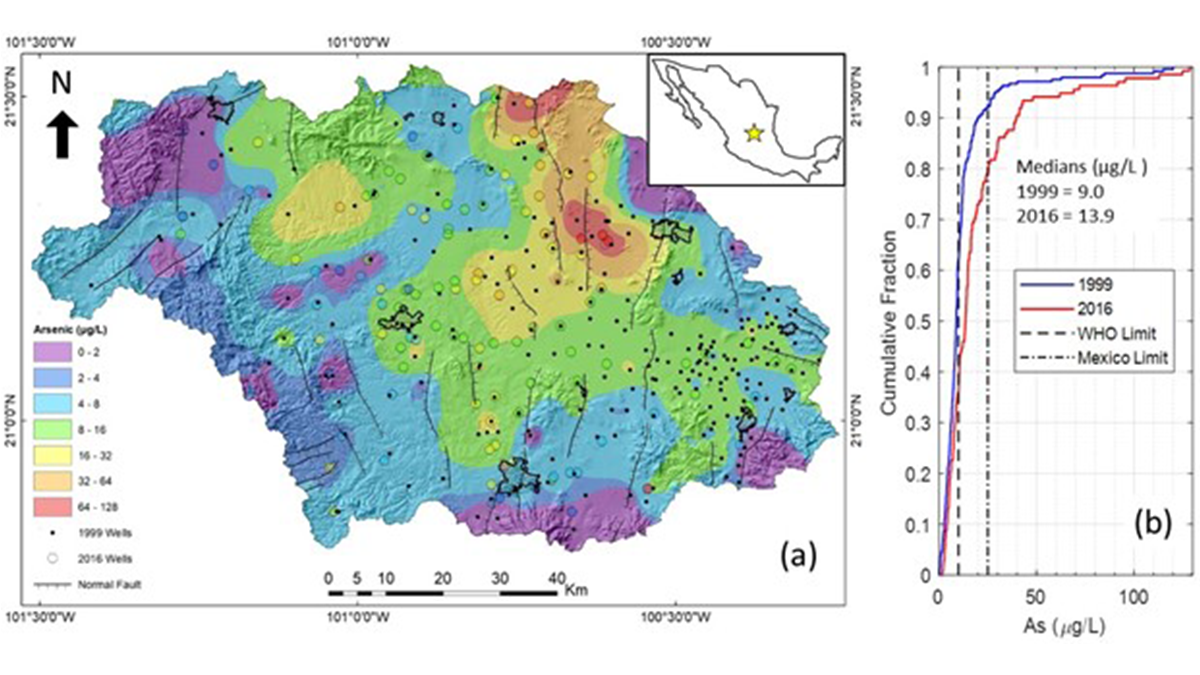La captura de especies como el atún y el pez espada no disminuyeron después de que un área marina protegida del tamaño del estado de Nueva York fuera establecida en las costas de México en 2017.
Mexico
Marine Protection Does Not Affect Fish Catches in Mexico
Catches of species such as tuna and swordfish did not decrease after a marine protected area the size of New York State was established off the coast of Mexico in 2017.
El festival más grande de ciencias de la Tierra en México atrae a las multitudes
Más de 1400 personas asistieron al Tierrafest 2023, un evento anual donde infancias, adolescentes, científicos y activistas comparten conocimiento sobre la Tierra y el ambiente en México.
Mexico’s Biggest Earth Science Festival Draws Crowds
More than 1,400 people attended TierraFest 2023, an annual event where children, teenagers, scientists, and activists share knowledge about Earth sciences and the environment in Mexico.
Groundwater Pumping Is Causing Mexico City to Sink
Researchers say knowing how much water is being extracted is crucial for addressing infrastructure and water supply crises in the capital.
El papel central de la agricultura en el calendario de horizonte azteca
Los calendarios de horizonte fueron clave para medir el tiempo para las culturas pre-hispánicas de la cuenca del Valle de México. Un nuevo estudio sugiere que los calendarios se usaron para gestionar los ciclos agrícolas.
Agriculture at the Center of the Aztec Horizon Calendar
Horizon calendars were a key part of time measurement for pre-Hispanic cultures in the Basin of Mexico. A new study suggests that calendars were used to manage the agricultural cycle.
Tracking Climate Through Ship Exhaust
International regulations have reduced aerosol pollutants released from ships. Now, researchers want to use ship tracks to better understand the ambiguous effects that cleaner air has on climate.
El granizo que colapsó a la Ciudad de México
Cuando una granizada intensa golpeó la capital de México la semana pasada, los ciudadanos se empezaron a preguntar si el cambio climático podría ser la causa. Pero, ¿es esa la pregunta que nos debemos hacer?
Protecting Children’s Health Can Benefit the Economy
A new study presents an integrated approach to predicting the human health impacts, economic implications, and remediation solutions for using contaminated groundwater in Central Mexico.










